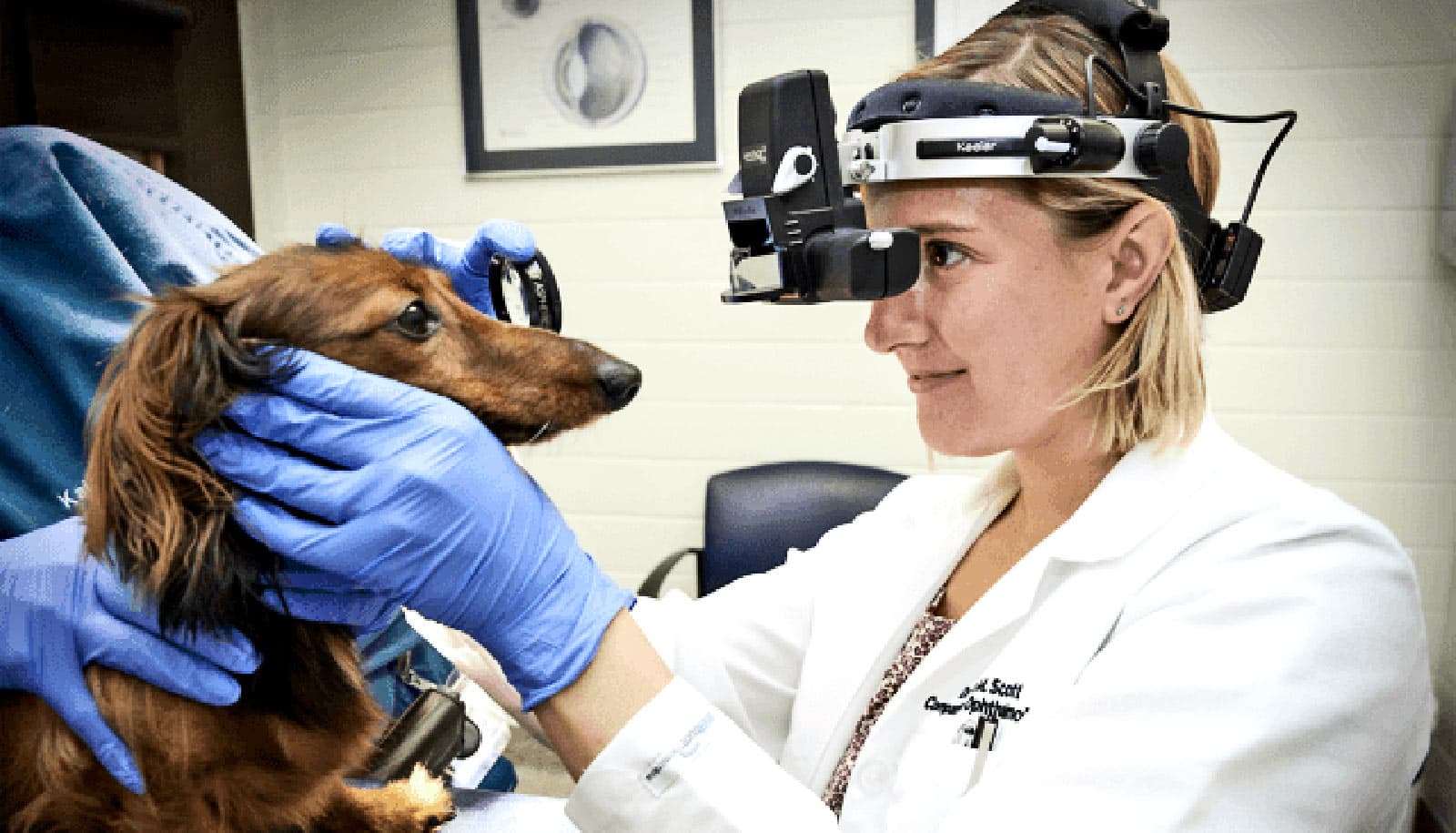
"Uncontrolled inflammation inside the eye, also known as uveitis, is a leading cause of complications after cataract surgery in dogs," says Erin Scott. (Credit: Texas A&M)
Turmeric-based drug eases eye inflammation in dogs
A new medication made from a compound in turmeric shows promise in treating uveitis, an eye inflammation condition, in dogs. Can it work for people?
A therapeutic derived from turmeric shows promise in decreasing ocular inflammation in dogs with from uveitis, according to a new study.
Uveitis —a common condition in dogs, humans, and other species—can have many causes, often occurring secondary to infectious diseases, cancer, and autoimmune diseases. It is also found in patients with longstanding cataracts and after operations correcting cataracts. Uveitis leads to pain and reduced vision.
Researchers believe the spice, long-praised for its natural anti-inflammatory properties, may also translate to the treatment of cataracts and uveitis in humans.
“Uncontrolled inflammation inside the eye, also known as uveitis, is a leading cause of complications after cataract surgery in dogs. The management of postoperative ocular inflammation is a major challenge observed in both human and veterinary ophthalmology,” says Erin Scott, an assistant professor in the College of Veterinary Medicine & Biomedical Sciences at Texas A&M University.
For a new study in Science Advances , Scott and colleagues at the Texas A&M University College of Pharmacy tested the anti-inflammatory properties of curcumin, a compound found in turmeric. They discovered that, when processed to a special nanoparticle formulation to boost absorption, the natural compound is safe and effective at managing uveitis without any known side effects.
Oral medications currently used to treat uveitis must be adequately absorbed into the blood stream for their medicinal effects to be effective. This requires the medication to successfully pass through the intestinal barrier—the physical barrier between the gut and the rest of the body via the circulatory system—which limits the absorption of many drugs.
Drug delivery to the eye presents additional challenges because of the blood-ocular barrier—the physical barrier between blood vessels and tissues of the eye—which tightly controls what substances can pass into the eye.
Therefore, researchers must find ways to bypass such barriers to improve drug availability within the body.
Scott and her colleagues implemented a new formulation of curcumin that improved transport of the substance across both intestinal and ocular barriers. Adding nanoparticle molecules that interact with receptors on a ubiquitous transmembrane carrier protein, known as the transferrin receptor, allows curcumin to hitch a ride across crucial barriers, improving absorption of the substance and reducing ocular inflammation.
Curcumin is especially attractive as a candidate for management of uveitis because it has no known side effects.
“Current treatments include a combination of systemic and topical anti-inflammatory medications, either in the form of steroids or non-steroidal anti-inflammatory drugs (NSAYSs),” Scott says.
“While both these medications are effective in the treatment of uveitis, they can cause unwanted side effects, such as vomiting, diarrhea, stomach ulcers, negatively impact kidney and liver function, and increase glucose levels in diabetic patients.”
Scott and her colleagues hope to start a clinical trial using this new medication in the near future and are optimistic that the utility of their findings may benefit populations beyond dogs.
“This medication may translate to the treatment of cataracts and uveitis in humans,” she says. “By studying animal patients with naturally occurring eye diseases, our findings may accelerate the development of medications to benefit both animals and humans.”
Source: Texas A&M University
The post Turmeric-based drug eases eye inflammation in dogs appeared first on Futurity .
Share this article:
This article uses material from the Futurity article, and is licenced under a CC BY-SA 4.0 International License. Images, videos and audio are available under their respective licenses.
Related Articles:
There’s a link between respiratory and digestion issues in dogs
Aug. 24, 2023 • futurityPeople literally don’t see things the same way
July 15, 2020 • futurityLinks/images:
- https://www.futurity.org/zika-eyes-tears-1241772-2/
- https://www.futurity.org/eye-charts-artificial-intelligence-2146852/
- https://doi.org/10.1126/sciadv.abb7878
- https://www.futurity.org/curcumin-nudges-sluggish-protein-folding/
- https://today.tamu.edu/2020/09/03/texas-am-researchers-develop-treatment-for-canine-ocular-condition-using-turmeric/
- https://www.futurity.org/uveitis-dogs-eye-inflammation-2434262-2/
- https://www.futurity.org


